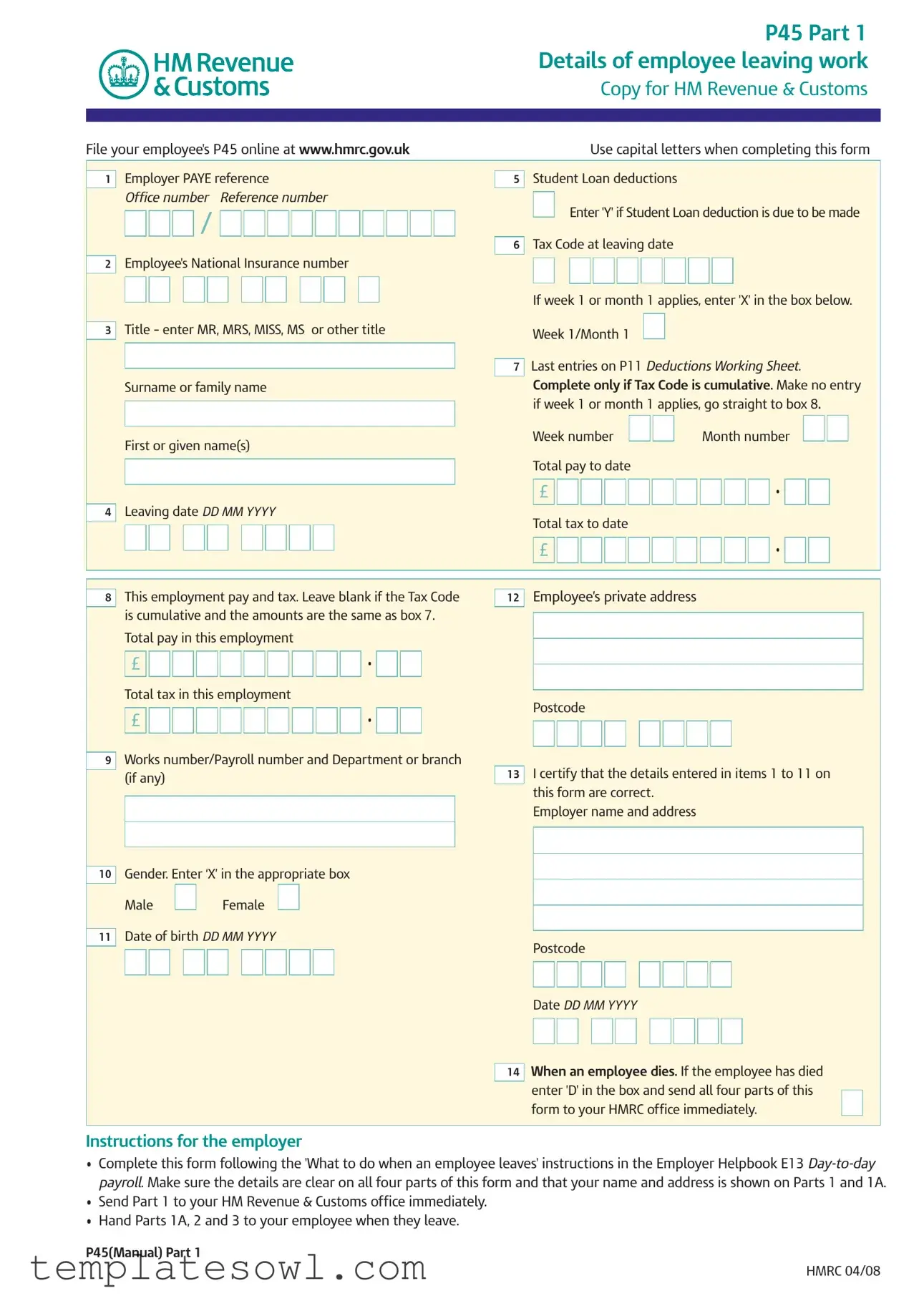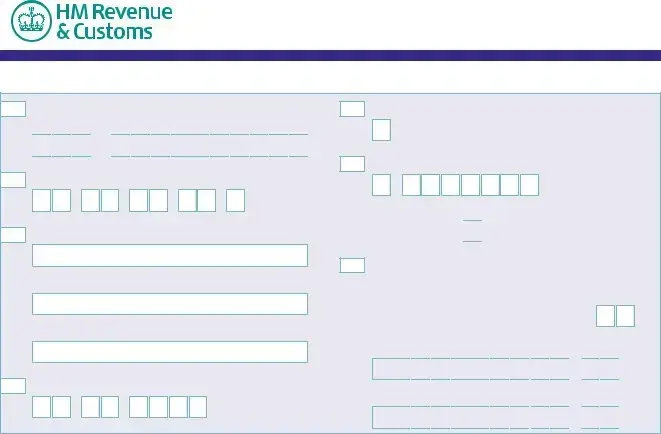What is a P45 form?
The P45 form is an important document that employers provide to employees when they leave a job. It contains details about the employee's income and the tax they have paid during their employment. The form is divided into several parts, with one part going to the employee and the others for the employer and HM Revenue & Customs (HMRC).
What information is included on the P45 form?
The P45 form includes several key details. This includes the employee's name, National Insurance number, leaving date, total pay to date, total tax paid, and the employee's tax code at the leaving date. It may also indicate if Student Loan deductions are applicable. Understanding this information is crucial for both the employee and the new employer.
How do I receive my P45 when leaving a job?
Your employer is responsible for providing you with a P45 upon your departure. You should receive this form on your last working day, or shortly thereafter. If you do not receive it, be sure to remind your employer, as it is an important document that you will need for your future employment or tax calculations.
What should I do with my P45?
Once you receive your P45, keep it in a safe place. You will need it for your records and to provide your new employer with the necessary tax information. If you are making a tax return, the details from your P45 will be essential. Should you decide to claim any tax refunds, you may need to reference this form as well.
What happens if I lose my P45?
If you lose your P45, you should contact your former employer and request a replacement. If this isn't possible, you can use your last payslip or contact HMRC directly to explain your situation. They can assist you in determining your tax status, but keep in mind that it might complicate matters temporarily.
Can I use my P45 for claiming benefits?
Yes, your P45 may be used when claiming benefits such as Jobseeker's Allowance or Employment and Support Allowance (ESA). It provides HMRC with your income and tax details, which can affect your entitlement to benefits. Ensure you take the relevant parts of your P45 to your Jobcentre Plus office if you are claiming benefits.
What should I do if I start a new job?
When starting a new job, provide your new employer with Parts 2 and 3 of your P45. This will ensure that your new employer has your correct tax details, which can help prevent excessive tax deductions. If you do not provide this form, your new employer may use an emergency tax code, which could lead to paying too much tax until your situation is clarified.
What if my tax code is cumulative or if I entered "week 1/month 1"?
If your tax code is cumulative, you will need to complete specific details on the P45, particularly if your tax situation has changed since employment began. If you are on a "week 1/month 1" code, it means tax calculations for that period will not take your previous income into account, which may result in higher tax rates. Always check for the correct box to signal your situation when filling out or providing your P45.









 /
/ 







































 •
• 





















 •
• 









 /
/ 







































 •
• 


